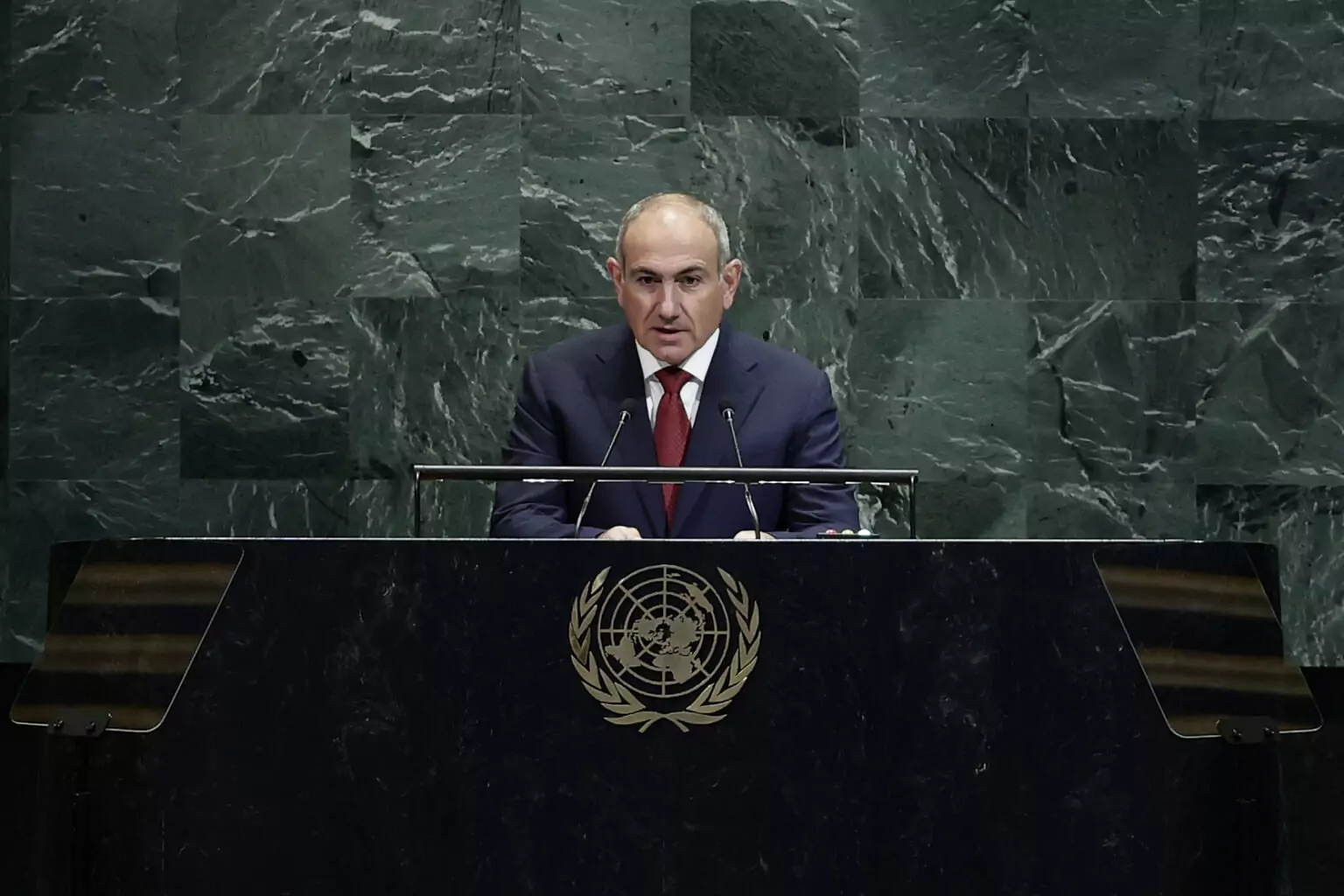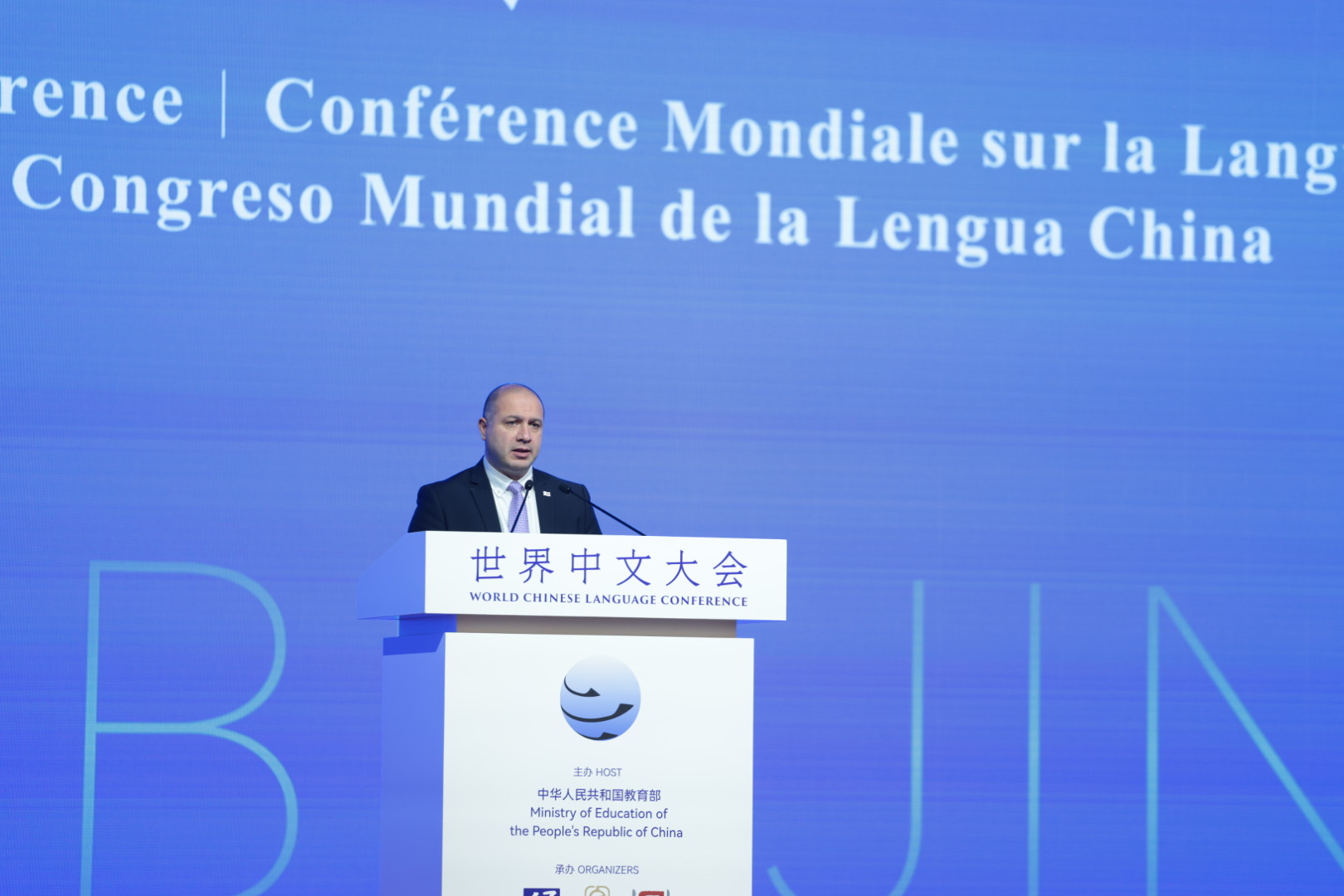
Armenia Balances Between the TRIPP and Zangezur Corridor
Executive Summary:
- The U.S.-brokered Trump Route for International Peace and Prosperity (TRIPP), which would connect Azerbaijan to its Nakhchivan exclave through Armenia, has accelerated Armenia–Azerbaijan normalization but triggered domestic backlash in Armenia and concern from Iran and Russia.
- TRIPP sovereignty concerns and uncertainty over implementation threaten Armenian Prime Minister Nikol Pashinyan’s domestic political standing, with parliamentary elections set for June 2026.
- Pashinyan continues to assert that the U.S.-managed TRIPP preserves full Armenian sovereignty, though border arrangements remain unclear following a public dispute with Azerbaijani President Ilham Aliyev about the name during the United Nations General Assembly (UNGA),
- Skepticism about the TRIPP is high, as some fear that a route to Nakhchivan could allow Azerbaijan or Russia to control Armenia’s strategic border with Iran or provide a pretext for renewed military conflict. Pashinyan’s critics charge that the U.S. involvement could do the same.
Following the August 8 summit between the Armenian and Azerbaijani leaders at the White House, momentum toward normalizing relations between Baku and Yerevan continues (see EDM, August 13). Despite some media reports suggesting that Azerbaijani President Ilham Aliyev and Armenian Prime Minister Nikol Pashinyan established peace during the meeting, the leaders only signed a seven-point declaration, confirming their intention to pursue peace. The Azerbaijani and Armenian foreign ministers initialed the prospective peace treaty, the 17-point Agreement On the Establishment of Peace and Interstate Relations between the Republic of Armenia and the Republic of Azerbaijan, which the two states finalized in March, committing to work toward formalizing the text (see EDM, March 24, August 12).
The progress made during the August 8 summit was enough for the leaders, especially Pashinyan, to trumpet that peace has been effectively established (Civil Net, August 28). Formal peace, however, remains contingent on Yerevan changing its constitution to remove what Azerbaijan and Türkiye perceive as territorial claims against them—Pashinyan says he will hold a referendum on constitutional reforms soon after the June 2026 parliamentary elections (see EDM, June 25; Azatutyun, September 22).
The August 8 meeting also yielded several other lower-profile memorandums (U.S. Department of State, August 29). For Azerbaijan, a Strategic Partnership Charter will be developed with the United States. Armenia signed three documents, agreeing to U.S. involvement in the Crossroads of Peace Capacity Building Partnership, an Artificial Intelligence (AI) and semiconductor partnership, as U.S. tech giant Nvidia plans to establish an AI Factory in the country, and an energy security partnership, including Small Modular Reactors (SMRs), which would be essential if Armenia decides on U.S. technology to replace its Soviet-era Nuclear power station (see EDM, July 22, 2024; Turan Research Center, September 16).
The smaller memorandums were overshadowed by the flashiest outcome of the Washington D.C. summit—Armenia’s commitment to the Trump Route for International Peace and Prosperity (TRIPP). The route, previously referred to as the Zangezur Corridor by Azerbaijan and Türkiye, would connect Azerbaijan to its exclave of Nakhchivan through Armenia. Despite not being part of the 17-point peace treaty, the route has been controversial since 2001 and was included as the ninth point in the November 2020 trilateral ceasefire statement that ended the Second Karabakh War (Haykakan Zhamanak, May 23, 2001; see EDM, November 12, 2020). In July, U.S. Ambassador to Türkiye Thomas Barrack openly suggested that a U.S. company could manage the Armenian section of the route between Azerbaijan and its exclave (see EDM, July 30). Under the TRIPP plan, the United States would lease the 44-kilometer (27.3-mile) route on Armenia’s border with Iran for 99 years and receive exclusive development rights, including on related infrastructure projects.
The establishment of a U.S.-led TRIPP has the potential to resolve conflicts over the naming and stewardship of the route, which resurfaced at the September United Nations General Assembly (UNGA) in New York on September 22–30. For those in Yerevan who oppose the name “Zangezur Corridor” and view its use as an opening for potential violations of Armenian sovereignty, there is fear that a route to Nakhchivan could allow Azerbaijan or Russia to control Armenia’s strategic border with Iran (The Prime Minister of the Republic of Armenia, July 15). Pashinyan, however, is adamant that the TRIPP and U.S. involvement will ensure full Armenian sovereignty along the route, although it remains unclear how border control will be implemented (ArmInfo, August 9). Armenia has suggested electronic scanning devices, an approach elaborated in a trilateral working group chaired by the Armenian, Azerbaijani, and Russian deputy prime ministers soon after the 2020 Nagorno-Karabakh war (Rossiysakaya Gazetta, September 30, 2022; Jam-News, June 10).
At UNGA, Pashinyan again claimed that the Zangezur Corridor could be construed as territorial claims on Armenia in direct response to Aliyev’s own use of the term at the podium (Prime Minister of Armenia, September 27; President of Azerbaijan, September 25; Azatutyun, September 27). Ironically, both Aliyev and Pashinyan implied that TRIPP represents a compromise, facilitating a route that connects Azerbaijan to Nakhchivan without endangering Armenian territory.
There is very little that Yerevan can do about Aliyev’s continued use of “Zangezur Corridor” to refer to the TRIPP, and government deputies in Armenia have since suggested that the remarks should no longer be discussed (Azatutyun, October 8). Despite that, Armenian Deputy Foreign Minister Vahan Kostanyan commented on the disagreement the following day, suggesting that Pashinyan and his allies’ responses to Aliyev at UNGA are best understood as a response to Armenian critics who allege they have conceded part of Armenia to Azerbaijan and the United States by agreeing to the TRIPP (Azatutyun, October 9). Pashinyan’s critics can use these claims against him in next year’s parliamentary elections, so he needs to distance himself and the TRIPP from the term “Zangezur Corridor,” which is quite unpopular in Armenia (Radar Armenia, October 5).
According to a post-Washington summit survey conducted by local pollster MPG Gallup International, 58.9 percent of respondents in Armenia also stated that they opposed TRIPP, even if Armenia had access to Iran via Nakhchivan (FIP, May 24, 2019; Groong, September 8). Just over 55 percent said they did not believe that the Washington Declaration would bring peace between Armenia and Azerbaijan, demonstrating the significant negative press coverage surrounding the TRIPP.
In the Armenian National Assembly, an opposition parliamentarian sarcastically asked if Pashinyan had rung Trump about his problems, given how the U.S. president had, perhaps jokingly, instructed Pashinyan to let him know if any emerged (ArmenPress, August 9; News.am, September 29). Meanwhile, pro-Pashinyan commentators maintain that the Washington Declaration was a diplomatic victory over Azerbaijan (Civilnet, August 21; Azatutyun, August 27). Others, including Armenia’s second president, Robert Kocharyan, whose political faction is the largest opposition to Pashinyan, and former U.S. Assistant Secretary of State James O’Brien, oppose the TRIPP (News.am, October 10). Aliyev has warned Pashinyan to adhere to the agreement made in Washington, implying that Baku, at least, is content with the deal as is (Civilnet, August 29). Following the recent Gaza Summit in Egypt, the opposition continues to allege that TRIPP was in essence an agreement between Trump and Aliyev, even if Armenia will determine the modalities through a joint business venture with the United States (Azatutyun, October 14; Armenpress, October 14).
U.S. involvement in the route caused concern in Tehran and Russia. Iran opposes any development that could disrupt its own connection to Armenia, and Russia expected that its border guards, still stationed in Armenia since 1992, would oversee the Nakhchivan route (see EDM, January 25, 2024). In reality, few details are known about TRIPP, and negotiations over its specifics have only recently begun. Russia says it plans to study the details of the TRIPP, given Armenia’s membership in the Eurasian Economic Union and the presence of Russian border guards in the area it is expected to pass through (Azatutyun, October 15). At the beginning of 2025, Russian border guards were removed from the border checkpoint on the Armenia–Iran border, but remain at other parts of its width (Azatutyun, December 10, 2024).
The same can be said about how U.S. involvement in the TRIPP may affect the Armenia–Iran border (see EDM, September 11). The Iranian president has visited Armenia since the declaration for discussions, and the Iranian Embassy in Yerevan continues to be very active, including in the Syunik region through which the TRIPP will pass (Caucasus Watch, September 29; Tehran Times, September 30). Economic projects are still pursued, and Yerevan and Tehran have since expressed plans to upgrade their relations to a strategic partnership (Armenpress, August 19, October 10).
The TRIPP is likely to have an overtly negative effect on Russia–Armenia relations, as Moscow views the agreement as a complete pivot toward the West. Pashinyan is pursuing a multi-vector foreign policy to reassure his sometimes conflicting international partners and demonstrate to the Kremlin that he is not prioritizing the European Union and the United States over Russia (Mirror-Spectator, September 27). In September, Pashinyan went on record to say that Armenia might not become an EU member, but opened an EU integration department in the foreign ministry in October (News.am, September 23; Armenia Public TV, October 6). Balancing the West and Russia has long been a feature of Armenian politics—under the former president, Serzh Sargsyan, Armenia pulled out of an EU Association Agreement in 2013 under pressure from Moscow. Yerevan later signed a Comprehensive and Enhanced Partnership Agreement with the European Union in 2017 (see EDM, September 11, 2013; Eurasianet, November 24).
Yerevan has also transformed its relationship with the People’s Republic of China (PRC) to a strategic partnership (Prime Minister of Armenia, August 31; Aravot, October 1). In September, Pashinyan’s wife, Anna Hakobyan, began a two-year master’s degree in Chinese Philosophy, while many of the My Step Foundation’s beneficiaries have visited the PRC on educational and cultural trips (My Step Foundation, June 10, accessed October 9). Pashinyan remains reliant on the Moscow-led Eurasian Economic Union and is bound by its economic and customs agreements (Azatutyun, June 27). Though the PRC seeks to invest in emerging projects in countries such as Armenia, and while the European Union can play an important investment role in TRIPP, Yerevan’s stated preference in the Washington Declaration is a partnership with the United States (Armenpress, July 16).
Pashinyan has promised the European Union and the Russia-led Commonwealth of Independent States (CIS) that the TRIPP will benefit them too (Arka, October 10). Whether all these competing interests can co-exist or be accommodated remains to be seen, but flawed information has already filled a vacuum formed by the lack of any details or practical agreements about the TRIPP (Azatutyun, October 14 [1], [2]). With elections on the horizon, this confusion and lack of clarity could adversely affect Pashinyan’s re-election chances in June 2026. Even so, the Armenia–Azerbaijan peace treaty remains on track, and Yerevan claims that construction on TRIPP could start soon (reOpen, October 3; Azatutyun, October 9).


